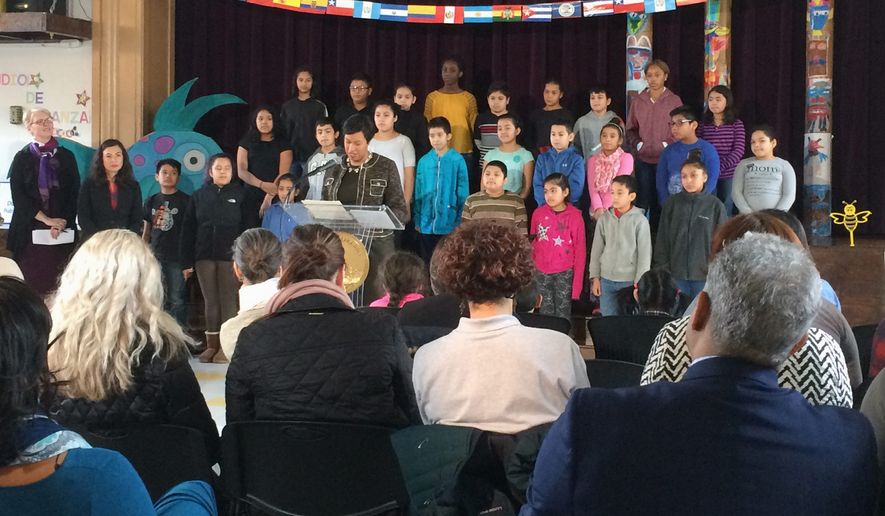D.C. Public Schools students next year will be allowed to gain preferential admission to high-performing charter schools in their neighborhoods, thanks to a change in the city’s school lottery system.
Mayor Muriel Bowser on Monday proposed the “walkability preference” policy, which would allow charter schools to give preference in admissions to elementary school children living within a half-mile, beginning in the 2018-2019 academic year.
“We want to make it easier for every parent to choose a school that best fits their child’s needs,” Miss Bowser said, adding that her administration approached the adjustment “very carefully” after input from parents.
There is at least one stipulation: The walkability preference will apply only to students whose in-boundary public school is more than a half-mile away.
Deputy Mayor for Education Jennifer Niles said that would apply to about 10,000 students in the District.
“Too many of our students are not getting the fair shot that our city can give them,” Miss Bowser said. “Many of them do not have equal access to a high-quality education or the resources they need to reach their full potential.”
The number of students with improved access to charter schools, which educate roughly half of the city’s 90,000 students, will vary based on how many of those schools opt in for the 2018-2019 lottery, which opens in December.
The lottery allows students to apply for any out-of-boundary public school, selective public school or charter school. Just over 21,000 people applied for school seats using the city’s universal lottery, My School D.C., for the current school year.
Miss Bowser also proposed a 2.2 percent annual increase to the public education system’s facilities allotment, in an effort to build schools and maintain existing buildings.
The extra funds will help the system keep up with enrollment, which is increasing at a rate of 3,000 more students each year, said Scott Pearson, executive director of the D.C. Public Charter School Board.
“That’s six or eight new schools every year,” Mr. Pearson said. “People want to live in the District and send their kids to public schools here.”
Addressing the expansion of charter schools, Miss Bowser said the city will launch a 10-year facilities management plan to make closed public school buildings available for charter school use.
“We need to use buildings meant for educating students to do just that, rather than sit vacant,” Mr. Pearson said. “That’s part of the way we’re going to solve this problem.”
Miss Bowser made the announcements at D.C. Bilingual, a dual-immersion Spanish and English charter school in Northeast. She awarded two schools, including D.C. Bilingual, with permanent facilities.
D.C. Bilingual will remain on the Keene campus, located on Riggs Road just north of the Fort Totten Metro station, and the PR Harris School will house the Charter Incubator Initiative, a program developed in partnership with the Office of the State Superintendent of Education to move-in-ready space to charter schools.
“Access to this building has been incredible for us,” said Daniela Anello, head of D.C. Bilingual. “For the first time these past few years, we have been able to operate our school having all of our students under the same roof. It has improved our program significantly.”




Please read our comment policy before commenting.